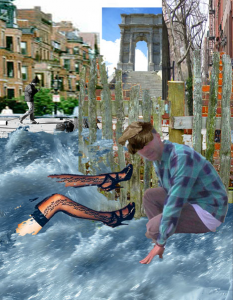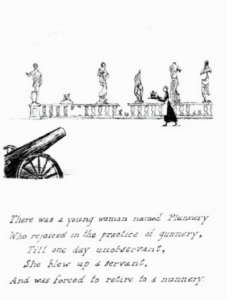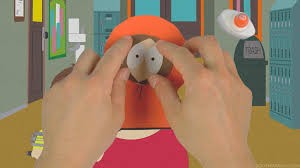
Joseph Gillette attempted to recreate Une Semaine de Bonté with images from the Internet. He has only completed Monday so far (http://unesemaine.josephgillette.net/monday/). It’s interesting to see how his interpretation changes the meaning of the original. Some of the images and their placement simply don’t convey the same situations. For example, we wavered in class on whether it is the woman or man who has more power in the collage on page 47. Correspondingly, on slide 8 on Gillette’s website, it more looks like the woman is falling into the water than kicking the man in the head (as it might look like in the original). The man also instead seems to confront the viewer, or look up as if he has been caught in the middle of doing something wrong.

Sometimes, Gillette’s choice of images takes the creepiness or mystery away from the original — maybe because the images are more recognizable to us? For example, the collage on page 60 has a dark quality to it, with the fearful-looking woman staring at an unconscious man. On slide 28, the woman looks a little fearful, but the man kind of just looks like he fell asleep in his spaghetti. That the reinterpretations have much brighter shades and are in color may also take away from the sense of darkness I get when I see the original. I wonder what people in Ernst’s time thought of his collages (e.g., what kind of commentary or critique they made), because maybe for them Victorian novels were more recognizable and familiar and thus allowed them to see a different meaning than I can.
Additionally, I am not sure if Gillette tried to bridge the images together as if they were part of an narrative, like Ernst did. I think Gillette’s process explains why it is harder for me to see the connections between images. He would do a keyword search on Google Images, such as for “woman sleeping” or “waterfall.” Thus, unlike Ernst with Victorian novels, Gillette chose to venture outside of a certain type of material or genre.
I’m not saying that Gillette’s interpretation is bad. I’m not sure if he intended to do Ernst’s work justice in terms of recreating the exact meanings of the original. His recreations instead serve as an interesting contrast to the original — actually, I think it is more helpful for me to more interpret them as a commentary on today’s digital image-informed society rather than something that serves to better illuminate Ernst’s work. Through the wonders of the Internet, Gillette is able to use images from a variety of time periods, allowing us to think of them in an almost unlimited number of contexts. Some images have watermarks on them, which to me is a reference to questions of ownership in the digital age. The lack of depth (at least in comparison to Ernst’s work) makes me think of how there is all this information out there on the Internet, and how it’s hard to weed through them to find quality.






